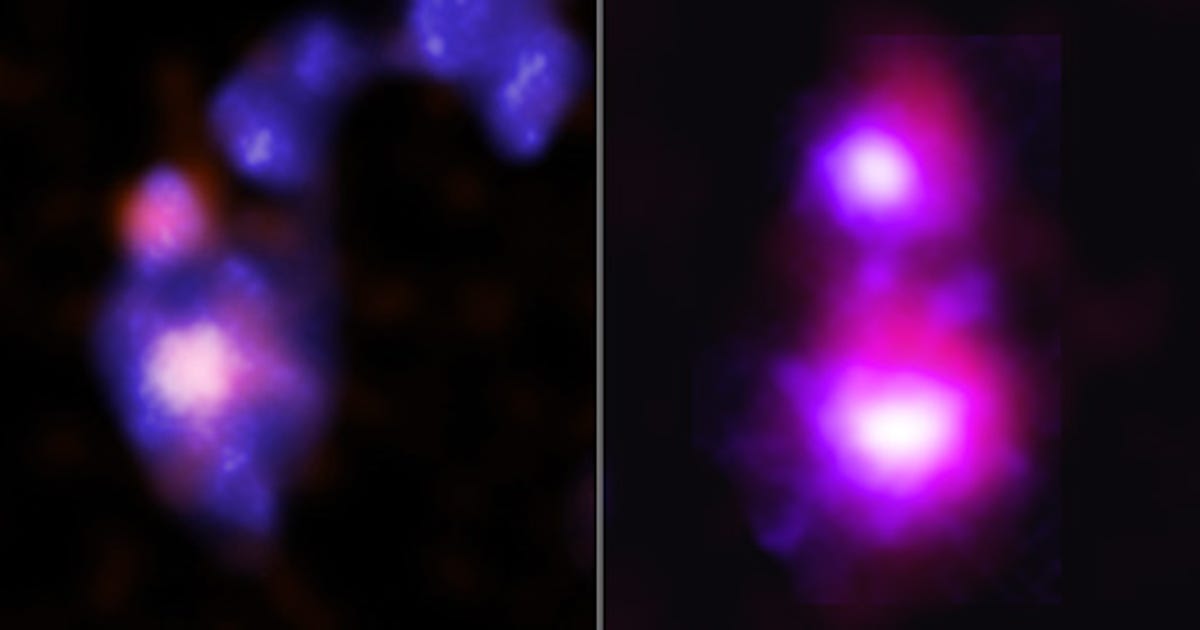
Astronomers are watching, with the help of NASA hardware, some of the most mysterious and powerful objects in the universe collide, and they’re perhaps getting a glimpse of our own distant future in the process.
Scientists used NASA’s Chandra X-ray Observatory to track two pairs of black holes in dwarf galaxies in the midst of very violent encounters. They published details on the smashing pairs this week in The Astrophysical Journal.
One of the pairs appears to be in the late stages of impact, a process called a merger that will eventually form a single giant black hole and larger galaxy. It’s in a cluster of galaxies called Abell 133 about 760 million light-years from Earth. The researchers have nicknamed the combining pair “Mirabilis” after a species of endangered hummingbird.
The other pair is in the cluster Abell 1758S about 3.2 billion light-years away. It appears to be in the early stages of merging, with a “bridge” of stars and other material connecting the two galaxies acting as the leading edge of the cosmic collision.
This isn’t the first time astronomers have found black holes playing a game of cosmic chicken, but it is a first for such behemoths at the center of dwarf galaxies.
“Astronomers have found many examples of black holes on collision courses in large galaxies that are relatively close by,” said Marko Micic, a University of Alabama at Tuscaloosa graduate student who led the study, in a statement. “But searches for them in dwarf galaxies are much more challenging and until now had failed.”
What is a black hole? The universe’s dark, mysterious monsters
This says less about the rarity of colliding dwarf galaxies than it does about how much harder it is to study fainter dwarf galaxies — the discovery is more a product of improving technology and techniques. In this case, researchers used Chandra’s superpowers to look for the superheated material surrounding black holes that produces large amounts of X-rays. They went looking for pairs of black holes in colliding dwarf galaxies and found the two sets.
Dwarf galaxies interest astrophysicists and cosmologists because they’re like a window back into deep cosmic time and may provide insights into our own galaxy’s youth.
“Most of the dwarf galaxies and black holes in the early universe are likely to have grown much larger by now, thanks to repeated mergers,” said co-author Brenna Wells, also of the University of Alabama at Tuscaloosa. “In some ways, dwarf galaxies are our galactic ancestors, which have evolved over billions of years to produce large galaxies like our own Milky Way.”
Fortunately, our own galaxy isn’t set to collide with another any time soon. But if you do happen to be around in 4 billion years, heads up for impact with Andromeda.
